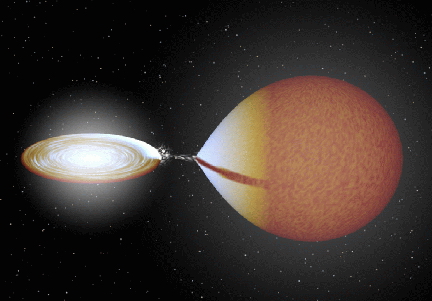Cataclysmic Variables
Our research team has performed several follow up observations of novae, dwarf novae and supernovae candidates, as well as cataclysmic variables with the 0.40-m and the 1.20-m telescopes in Greece.
EX Dra was one of the very interesting targets, which was observed consecutively for 4 months by a group of observers at the Kryoneri Astronomical Station, in Greece, as it was brightening, during an outburst.
The first detection of the growing humps of the dwarf nova WZ Sge was done in 2001. This target offered an excellent opportunity to investigate the post-outburst variations of a dwarf nova, with simultaneous photometry in many wavelengths, as well as spectroscopy, in the frame of international campaigns.
The symbiotic system YY Her was an other target, frequently observed from the University of Athens Observatory, in Greece. The multi-site campaign has resulted with a very good coverage of the expected minimum of light variation, offering the opportunity to study the nature of the common envelope, surrounding the members of the system.
Since 2003 the massive cataclysmic variables EE Cep and AZ Cas are observed, while participating in the international observing campaign in collaboration with the University of Torun, Poland. The purpose of this study is to investigate the structure of the accretion disc in these giant systems, as they appear quite complicated with several rings and gaps, which vary through time, as the systems rotate every 5.6 and 9.3 years respectively. The study of these two systems gave so far four papers in journals and conference proceedings and there are two more undergoing analysis for the recent (2014) eclipse events.
Collaborators on projects related to cataclysmic variables include:
Publications
Publications released after research on cataclysmic variables are:

